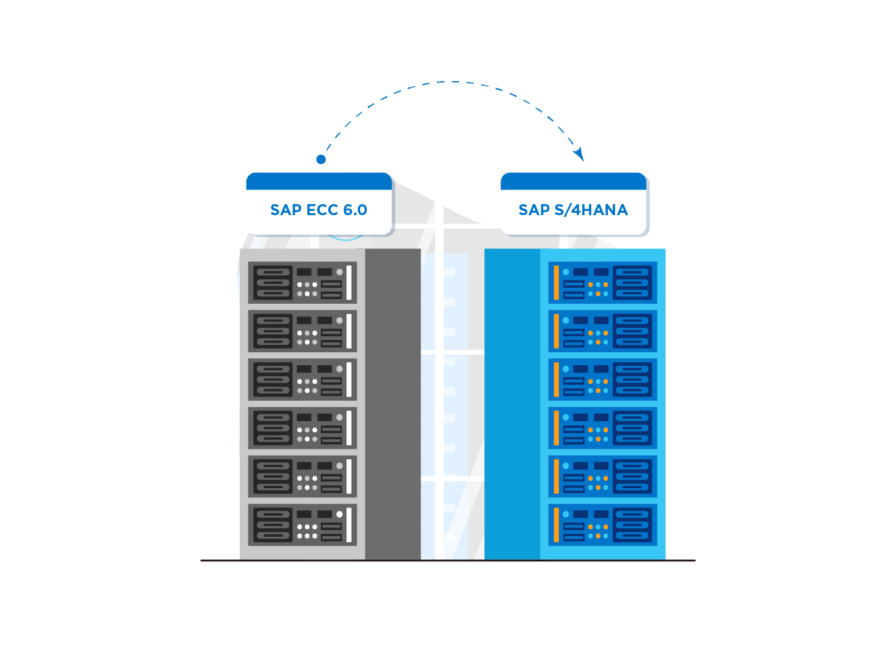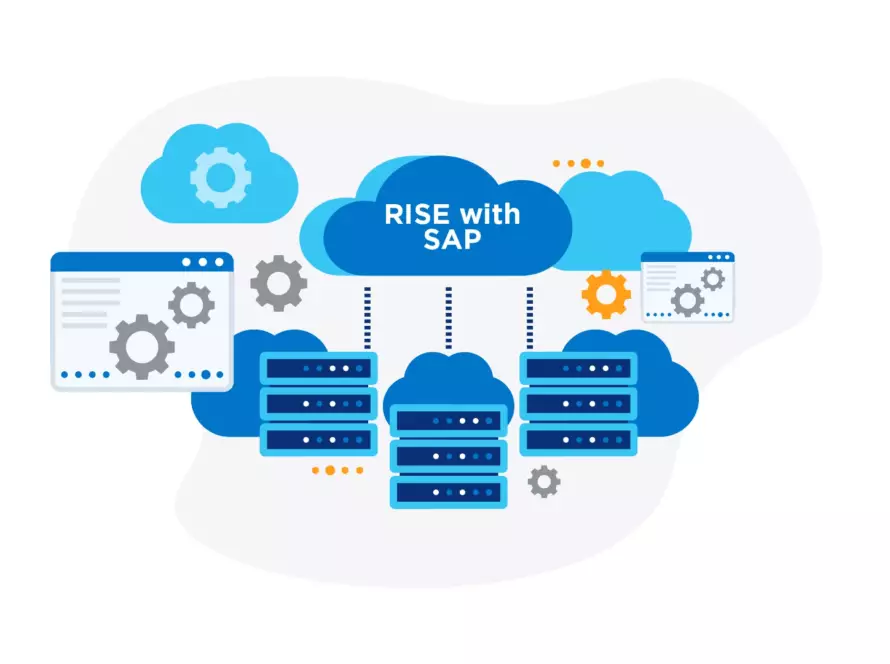It is widely believed and in fact, affirmed in many scenarios, that the 4th industrial revolution will change the world. The convergence of digital, physical and bio technologies is driving an unrelenting acceleration of human progress. What this means is that Industry 4.0 presents an opportunity for sustainable competitive advantage through next-generation applications such as predictive analytics, smart factories and cities, retail customer self-service and more.
To better differentiate themselves in a busy marketplace, businesses across every industry are harnessing big data in a number of applications – whether that’s to speed up and make more informed decisions, personalize customer experiences, influence IT purchase decisions, or predict consumer behavior, among many other use cases. Suffice to say, there’s data coming at us from everywhere!
Capitalizing on data is one thing, but how certain are you that your infrastructure can support data volumes and application requirements? In a new study, the vast majority of global IT decision makers believe their current infrastructures aren’t ready to harness the power of Industry 4.01. Although many organizations have moved to cloud and adopted cloud-first strategies, four in five IT decision-makers surveyed in the same study, say that a centralized cloud model cannot support their workload demands.
Why is multi-cloud a better strategy for the next revolution?
The concept of a multi-cloud environment is simple: distribute workloads across two or more clouds to reduce risk and minimize downtime. That often means signing up for services with cloud providers like Lumen, AWS, Microsoft Azure, Google Cloud or IBM Cloud, either to replace or supplement an organization’s in-house infrastructure services. The use of multi-vendor, hybrid-cloud environments is gaining momentum, as digital businesses in Asia Pacific (APAC) become more accustomed to running applications and workloads across a combination of public and private clouds from multiple providers.
81% of enterprise public cloud users work with multiple providers
According to Gartner’s recent survey, 81% of enterprise public cloud users work with multiple providers1; the study revealed that the decision to move from a central cloud to multi-cloud is based on three major drivers: sourcing, architecture, and governance.
A major benefit of adopting a multi-cloud strategy is avoiding vendor lock-in (sourcing). This allows enterprises to better capitalize on the strengths of different cloud vendors to address their specific business challenges. Having a well-planned multi-cloud strategy also means that it is easier to scale up cloud resources in the future if required.
Different cloud providers fulfil different roles, and it is rare for any single provider to meet all your business needs. Having a robust multi-cloud strategy enables IT managers to consider the performance, security and regulatory requirements of each workload, and select the cloud configuration best suited to the task (architecture).
Moving to multi-cloud can also potentially cause more headaches for IT security teams, when more than one cloud providers is involved. However, with better management and threat defense capabilities, a centralized method for tracking and monitoring applications would also vastly help strengthen an organization’s security posture (governance).
Common pitfalls of multi-cloud deployment
While multi-cloud is fast becoming the preferred choice among enterprises, the operational challenges of working across different environments — and managing such environments — can be overwhelming.
Common barriers to multi-cloud adoption include:
- Multi-cloud migration woes
Migrating data and applications across multiple clouds can be a tricky proposition. In a multi-cloud environment, routine tasks such as resource provisioning can become cumbersome to manage without tight integration between the different portals, APIs and processes used by various providers. Imagine the toll it takes on your IT team having to migrate legacy applications and manage a large combination of cloud platforms at the same time. Once entrenched in multi-cloud environments, the complexity can quickly escalate. - Managing cloud sprawl
Cloud sprawl happens when there are too many cloud services used by different departments or business units across the organization — without IT managers having full visibility and control over the use of cloud resources. If left unmanaged and not properly reined in, this proliferation of cloud services can result in operational issues or IT managers having to constantly grapple with cost oversight and redundancy issues. - Security and compliance
Like building too many front doors to your house, multiple cloud platforms open a company up to a wider range of security vulnerabilities. The shift to multi-cloud requires extra effort to meet an organization’s security, governance and compliance requirements.
5 best practices for multi-cloud success
A successful multi-cloud strategy takes careful planning and evaluation of the solutions needed to accommodate new tasks, applications and workloads. IT managers also need to explore how to build and maintain a dynamic, adaptive network architecture to support multi-cloud environments.
Here are several best practices that enterprises should consider when making the transition.
- Assess which cloud services best address your business needs
A good starting point is to conduct a thorough audit of your present infrastructure needs. This allows organizations to better figure out which additional cloud services are needed for your business workloads and applications. Be sure to evaluate whether the cloud infrastructure is scalable and flexible enough to accommodate your business expansion over the long term.Another consideration is your organization’s ability to ensure fast, seamless and secure access to public and private clouds. When connecting to multiple cloud service providers, network-related attributes such as security, reliable uptime, flexible bandwidth and low latency are required for a high-performing environment.
- Monitor your cloud usage to optimize your investment
Maintaining full visibility over your cloud environments is the best way to ensure that the deployment of cloud resources is well managed and prevent costs from spiraling out of control.As your company deploys more applications across various clouds, you want to keep a close eye on what’s being used and who is using them. But one of the challenges that arise from cloud sprawl is that without the right tools, it becomes harder for IT managers to predict usage and keep track of their cloud spend. This runs the risks of failing to optimize your multi-cloud infrastructure and possibly overpaying for cloud services that are under-utilized.
A solution is to use unified cloud management tools that provide the visibility needed to monitor and manage cloud usage, performance and cost across multiple platforms.
LUMEN CLOUD APPLICATION MANAGER
A cloud-agnostic application and infrastructure management platform in action.
- Ensure effective cloud governance across disparate environments Assessing and monitoring your legacy hosted and cloud environments is essential not only for managing cloud usage, but also for security and governance purposes. Ensuring multi-cloud governance should be a top priority to ensure that applications are deployed and managed according to company policies, across multiple environments and cloud providers.Every aspect of the organization, including IT, must work within these governance requirements and guidelines.To address the challenge of coordinating workloads across different clouds, look for the right cloud management tools to automate application lifecycle management, monitoring, patching and other tasks. These solutions allow you to orchestrate workloads across any cloud or infrastructure with greater ease and less manual oversight.
- Fortify security and risk controls As with any cloud-based networks, you want to safeguard against data losses, Distributed Denial-of-Service (DDoS) attacks and other security concerns.Multi-cloud environments further add to the complexity in terms of how effective security controls are to be enforced and implemented. For instance, traditional security tools are not necessarily designed to protect data and applications accessed across both on-premise and public cloud environments.No matter how many cloud services, it is vital to have a full complement of capabilities and processes that support your company’s security and compliance protocols. Here, it is important to implement consistent policy-based controls across the multiple cloud services you deploy.
- Put multi-cloud management at the heart of your strategy Finally, enterprises expanding into multi-cloud environments can benefit significantly from having the right management platform to reduce complexity, improve control and governance and optimize performance. A cohesive management approach enables IT teams to more easily provision and manage application workloads across any cloud or on-premise infrastructure. When evaluating cloud management tools, consider platforms that provide the ability to automate key tasks and functions such as application deployments and infrastructure allocation.Effective multi-cloud management can also help enterprises augment the built-in security on third-party public cloud platforms. The ideal cloud management solution should provide end-to-end visibility to monitor and control usage across different cloud platforms, empowering security operations (SecOps) teams with transparent oversight of the entire enterprise environment. Lumen has built a remarkable track record of supporting digital businesses worldwide in their journey towards effective multi-cloud management.
-
One size does not fit all
If a business’s multi-cloud solutions aren’t functioning smoothly and cohesively, then the desired efficiencies of cloud computing are wasted. With the predictions that most companies will adopt a multi-cloud approach over the next few years, no one wants to be left behind.
This content is provided for informational purposes only and may require additional research and substantiation by the end user. In addition, the information is provided “as is” without any warranty or condition of any kind, either express or implied. Use of this information is at the end user’s own risk. Lumen does not warrant that the information will meet the end user’s requirements or that the implementation or usage of this information will result in the desired outcome of the end user. This document represents Lumen’s products and offerings as of the date of issue. Services not available everywhere. Business customers only. Lumen may change or cancel products and services or substitute similar products and services at its sole discretion without notice. All third-party company and product or service names referenced in this article are for identification purposes only and do not imply endorsement or affiliation with Lumen. ©2022 Lumen Technologies. All Rights Reserved.
Discover how to prepare your organization for the demands of Industry 4.0 with the right cloud strategy.





